20 Easy Plants for Kids To Grow (with Pictures)
-

- Last updated:

Gardening is a great way to get your kids outdoors while also encouraging them to eat their vegetables. By involving your child in the gardening process, they are more likely to enjoy nature and have respect for the world around them.
So that your child does not get discouraged during the gardening process, select kid-friendly plants that are easy to grow. Easy and fast growth will get your child excited since they get to see the fruits of their labor pretty quickly.
Here are 20 great plants to try and get your kids to grow!
The Top 20 Easy Plants for Kids To Grow
1. Snap Peas
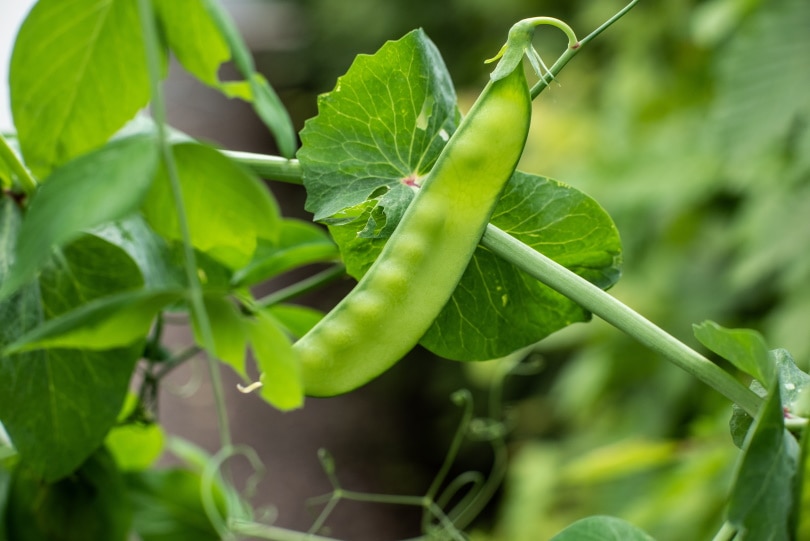
| USDA Hardiness Region | 3-11 |
| Sun | 6–8 hours of full exposure |
| Placement | Anywhere with full sun and good drainage |
Snap peas are easy enough to grow, and they can encourage your child to eat more greens and vegetables. Snap peas produce juicy pods that last many weeks and grow rapidly.
They also have a sweet flavor that children love. Parents who grow snap peas report that their child loves popping a pod in their mouth while they are gardening, but you can also incorporate snap peas into salads and healthy meals.
- Easy to grow
- Grows fast
- Delicious flavor
- Requires full sun
2. Green Beans

| USDA Hardiness Region | 2–11 |
| Sun | 6–8 hours of full exposure |
| Placement | Anywhere with full sun and good drainage |
Even though green beans are a boring vegetable, for the most part, they are one of the most fun vegetables to grow. They grow fast and have high yields. For children, green beans are great because they do not grow super tall, and they have a satisfying snapping sound.
Not to mention, green beans are a favorite vegetable to incorporate into nightly dinners. They are easy to grow and taste good, and even if your child is not a green bean fan yet, they likely will be once they harvest their own.
- Easy to grow
- Easy for kids to harvest
- Great for cooking
- Requires full sunlight
3. Cucumber
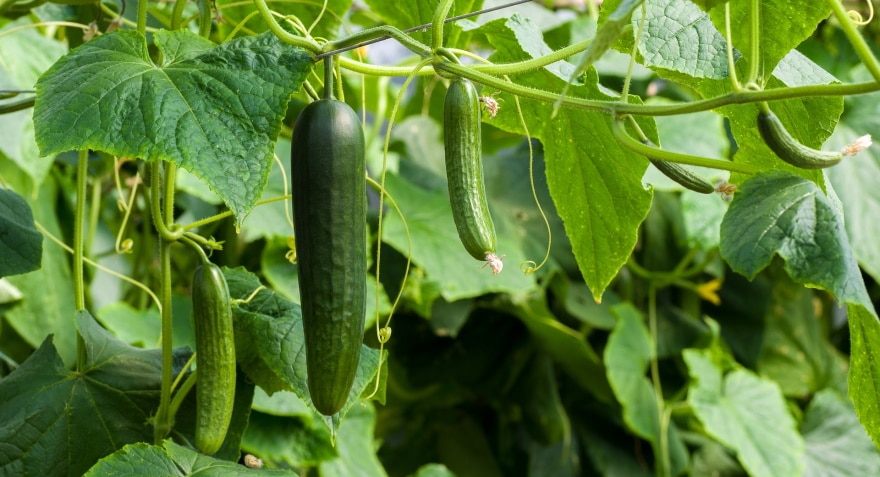
| USDA Hardiness Region | 4–12 |
| Sun | Best in full sun but can grow with a minimum of 5 hours of sunlight |
| Placement | Away from trees, well-drained areas |
Cucumber is many children’s favorite vegetable. It has a mild flavor and can be paired with other tasty treats, like cream cheese and seasoning, which everyone loves. Cucumber is also a great vegetable to add to your child’s garden because they are easy to grow and grow prolifically.
You will need to plant a cucumber in well-drained soil. During the middle of the summer, use compost and water to fertilize the land and water the cucumbers about four times a week.
- Easy to grow
- A favorite snack
- Needs to be placed away from other large plants
4. Sunflowers
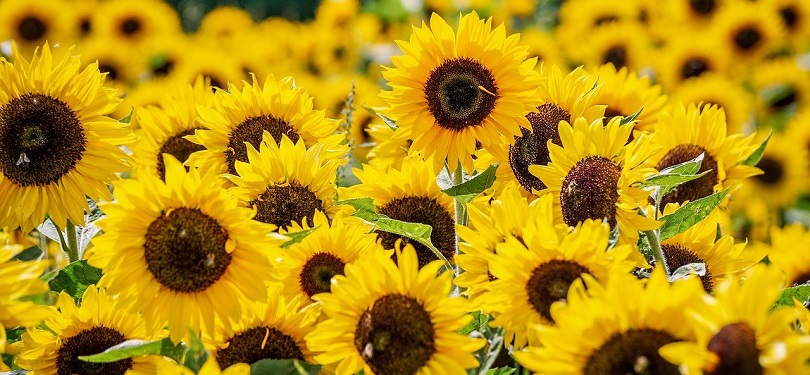
| USDA Hardiness Region | 4–9 |
| Sun | 6–8 hours of full exposure |
| Placement | Around the shelter, like a fence, with a lot of room for growth |
Sunflowers are some of the most beautiful flowers to look at. Despite their beauty, they are very easy to plant and care for. There are many varieties of sunflowers you can choose from.
Get your child involved in the entire process by allowing them to pick out the flower type. The sunflower will need to self-sow for one season, or you can plant them in the spring once you can work with the soil.
- Beautiful
- Self-sowing
- Edible seeds
- Requires full sun
- Needs shelter from harsh winds
5. Marigolds

| USDA Hardiness Region | 2–11 |
| Sun | Full sun to partial shade |
| Placement | Anywhere with good drainage |
Marigolds are gorgeous flowers that do not need the delicate hand of an experienced gardener. Most marigolds are different shades of yellow, gold, orange, and red, which makes them a gorgeous addition to any garden.
They also handle heat well. Your child will be more than happy to plant marigolds so they can see pops of colors and pick bouquets for you and other friends and family members.
- Beautiful blooms
- Resistant to heat
- Sturdy
- Can mold easily
6. Snapdragon
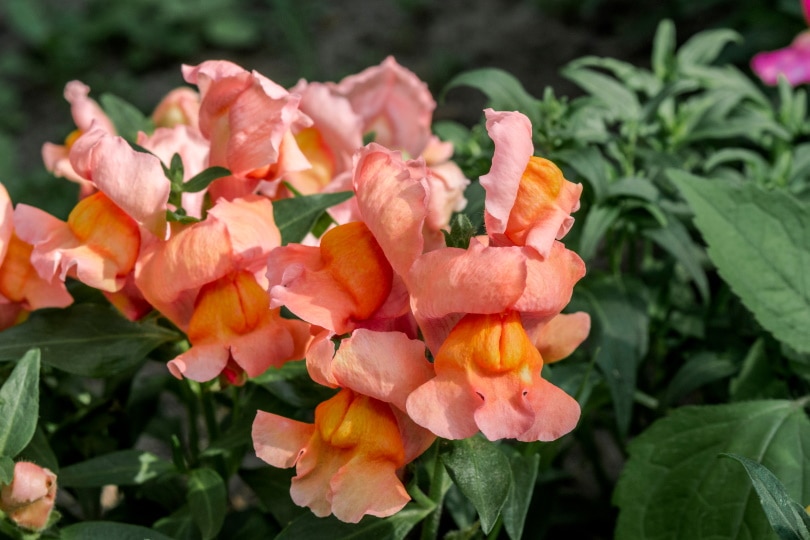
| USDA Hardiness Region | 7–11 |
| Sun | At least 6 hours of direct sunlight |
| Placement | Sunny locations with rich, well-drained soil |
Snapdragon is another flower that adds a pop of color to any garden. Their flowers have a yellow base that gently cascades into a hot pink color. They grow upwards and have a very sturdy stem.
Snapdragons are a great addition to your child’s garden because the plants themselves are sturdy. This means you don’t have to worry about your child accidentally destroying them in the process of planting or picking.
- Beautiful
- Tolerant to many conditions
- Sturdy
- Requires a lot of sunlight
7. Squash
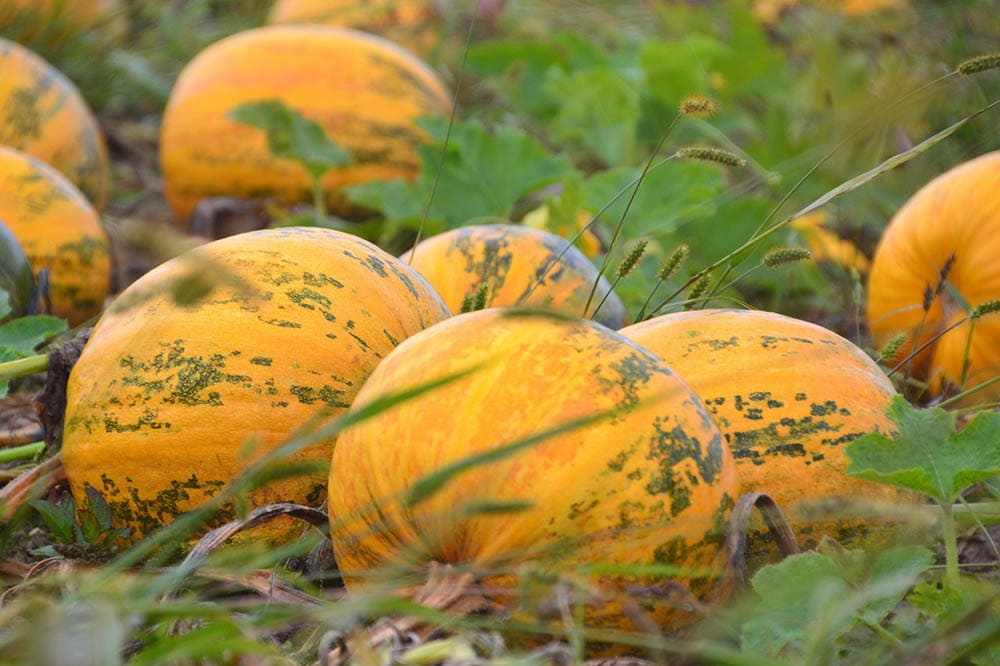
| USDA Hardiness Region | 3–10 |
| Sun | At least 6 hours of direct sunlight |
| Placement | Sunny locations with rich, well-drained soil |
Squash is frequently considered the most fun vegetable to watch grow. These yellow vegetables grow with huge green leaves, vines, and blossoms that sprawl out in all directions. This exhilarating scene is fun for children to watch.
Additionally, squash has a mild flavor that can easily be paired with butter and seasonings to make it delicious for your child. After they have watched this exhilarating plant spread all out, they will be ecstatic to eat the vegetable.
- Fun to watch grow
- A mild flavor that children can tolerate
- Requires a lot of sunlight
8. Pumpkin

| USDA Hardiness Region | 3–7 |
| Sun | At least 6 hours of direct sunlight |
| Placement | Sunny locations with rich, well-drained soil |
One of the most fun types of squash to grow is pumpkins. If you time the planting correctly, you can harvest your own pumpkin to carve a jack-o-lantern for Halloween. This will make growing pumpkins exciting from start to finish.
You want to plant your pumpkins 90–120 days before you intend to pick them. You will have to water the pumpkins frequently but also care for the surrounding areas to prevent any mildew from taking the pumpkins over.
- Fun to watch grow
- Can be used for Halloween
- Delicious
- Requires more care than other plants on this list
9. Calendula
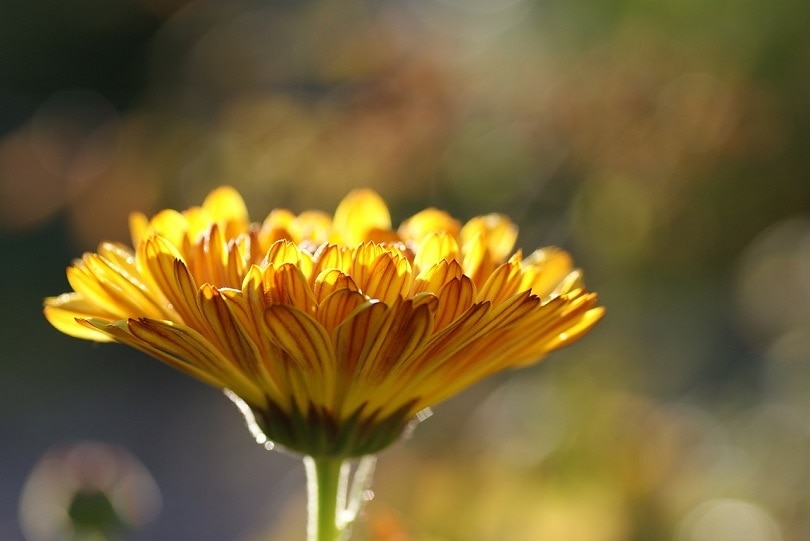
| USDA Hardiness Region | 9–11 |
| Sun | Full sun to partial shade |
| Placement | Along the edge of the garden |
Calendula is a type of flower that belongs to the Marigold family, but it isn’t the exact same flower that we mentioned above. These calendulas can add a pop of color to your salads. They can even be turned into oils, candles, soaps, and more.
It’s best to plant calendula during the fall if you live in a mild climate or the spring once the soil is workable. It’s a great idea to plant calendula with your vegetables because it prevents aphids. You will need to water calendula a few times a week.
- Beautiful
- Useful
- Prevents aphids
- Spreads quickly
10.Radishes
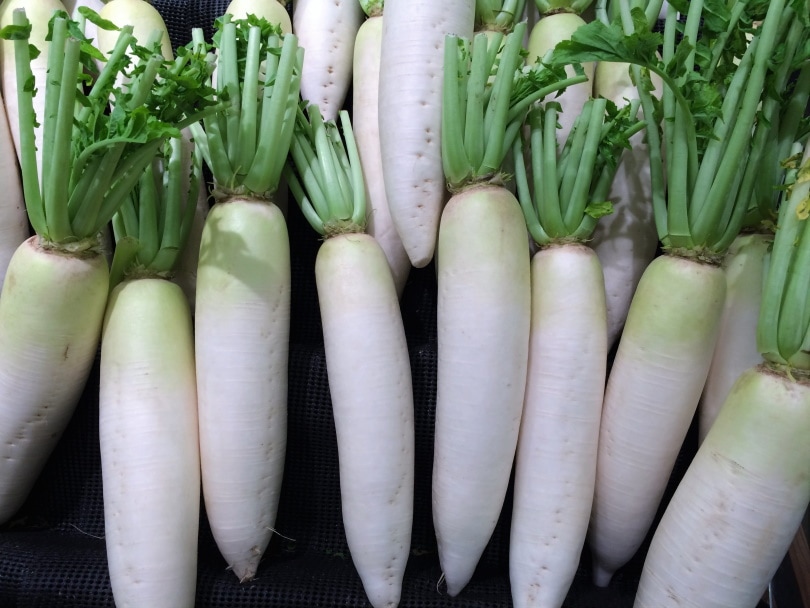
| USDA Hardiness Region | 2–11 |
| Sun | At least 6 hours of direct sunlight |
| Placement | Sunny locations with rich, well-drained soil |
Radishes are unique plants that many people are fascinated with, especially children. They have a slightly spicy flavor that tastes great in salads, but they are delicious to dip in ranch dressing and other sauces.
Not to mention, radishes grow really fast. The plants can be harvested as soon as a month after planting. Because of how fast radishes grow, they are great to incorporate into your child’s garden.
- Delicious to eat
- Fast growers
- Spicy flavor not loved by children
11. Cherry Tomatoes
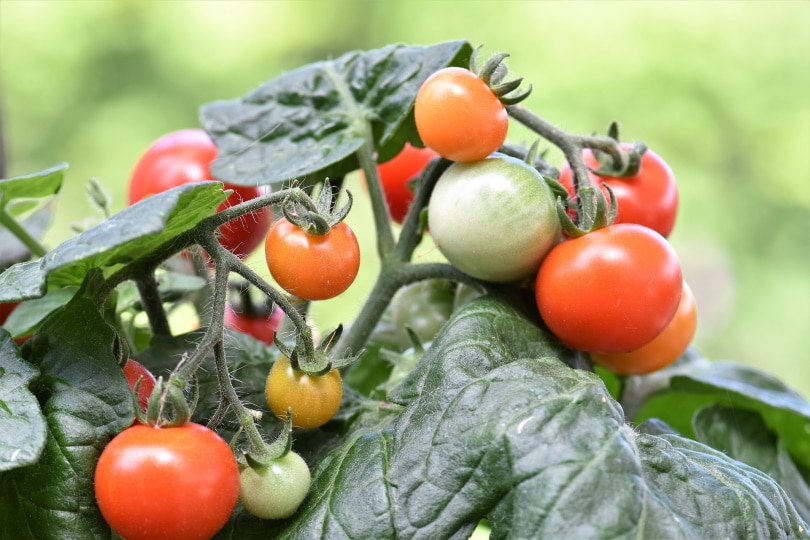
| USDA Hardiness Region | 3–10 |
| Sun | 8 hours of direct sunlight |
| Placement | Requires an extra sunny spot |
Full-sized tomatoes can be a bit tricky to grow, but this is not the case for cherry tomatoes. Cherry tomatoes are prolific and can grow in a variety of growing seasons. You can grow them outside or inside.
Not to mention, cherry tomatoes are familiar to children which will make the child excited to grow the plant. Your kid will love to taste the cherry tomatoes after they have been picked.
- Familiar to children
- Easy to grow
- Require a lot of sunlight
12. Carrots
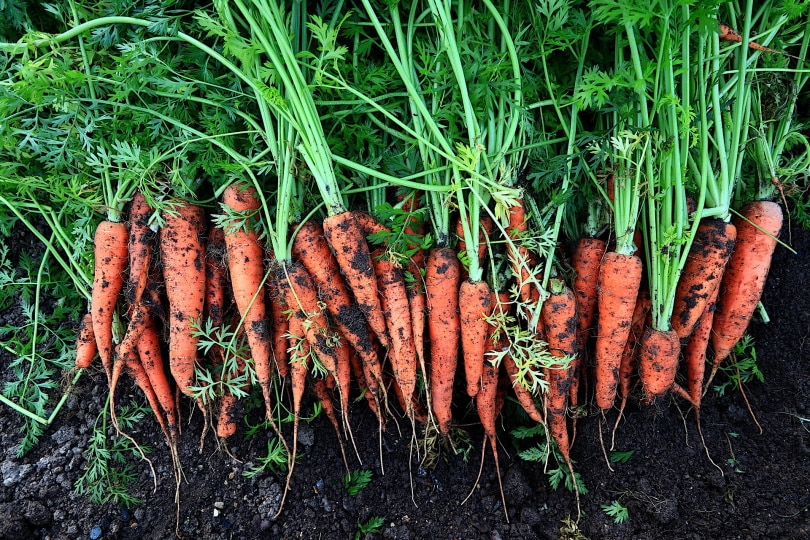
| USDA Hardiness Region | 3–10 |
| Sun | 6–8 hours of full exposure |
| Placement | Deeply tilled land with a lot of water |
Carrots are one of the first vegetables that children are introduced to, making them a favorite veggie among all children. In addition to the familiarity and taste of carrots, children love growing these vegetables because they can grow in many climates and are super easy to produce.
The trick to growing prolific carrots is to make sure you treat the ground right. It needs to be tilled deeply so that the carrot doesn’t have to overwork to grow downwards. You also need to make sure the carrots have enough sunlight without resulting in crusted soil.
- Children love carrots
- Easy to grow
- Need good preparation
13. Berries
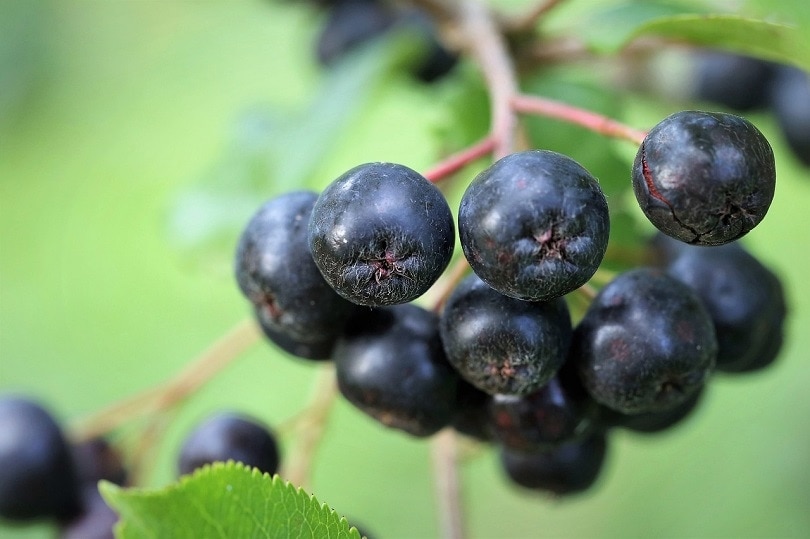
| USDA Hardiness Region | 4–8 |
| Sun | Full sun to partial shade |
| Placement | Raised beds with good drainage |
Berries are deliciously sugary fruits that are also healthy and nutritious. Because of the flavor of berries, they are a favorite among children and adults alike. Plus, they’re actually very easy to grow.
Strawberries are a great place to start. They don’t need a lot of space. You can plant them in rich soil in your yard or containers. You will need to water the strawberries frequently, but they will do the rest on their own.
- Delicious
- Many different varieties
- Easy to grow
- Require extensive watering
14. Borage

| USDA Hardiness Region | 2–11 |
| Sun | 6–8 hours of full exposure |
| Placement | Organic matter with well-drained soil |
Borage is a unique flower. It includes pale blue, star-shaped blooms and hairy buds. Because of this plant’s different appearance, it is a favorite among most children. It will grow quickly the first year you plant it, and it will return for years after.
Borage is a great plant if you want to create a pollinator paradise. The leaves taste like cucumber and attract bees and butterflies. One thing to note about borage is that it does not handle transplanting well. So, pick a spot and keep it there.
- Beautiful
- Attracts pollinators
- Returns every year
- Cannot be transplanted
- Requires a lot of sun
15. Lettuce
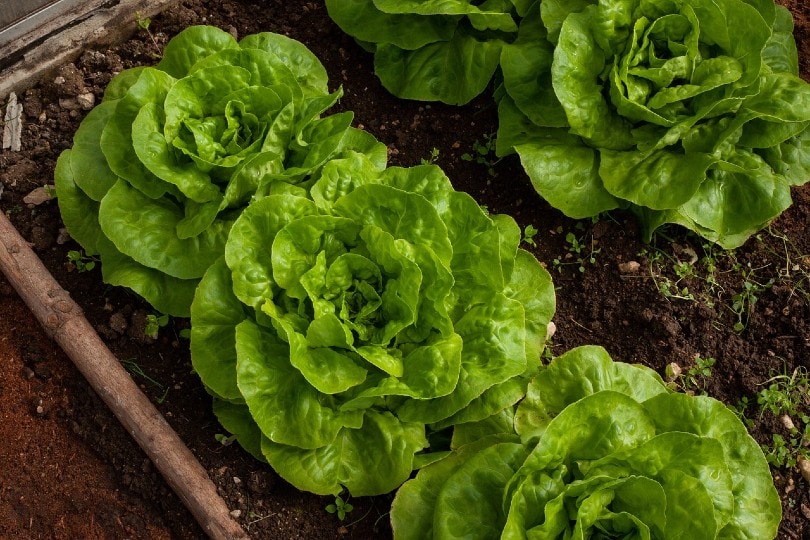
| USDA Hardiness Region | 2–11 |
| Sun | Full sun to partial shade |
| Placement | Container with full sun |
Not all children love lettuce, but it is a great vegetable to start growing and one of the easiest vegetables to farm. You can grow it outside or inside in containers. There are also a variety of lettuces to choose from.
Hopefully, growing lettuce with your children will encourage them to eat more salads. Although the flavor won’t be any different, the process of watching the lettuce grow will encourage your child to try out the vegetable they have nurtured.
- Easy to grow
- Can be grown inside
- Grows fast and consistently
- Many children don’t like lettuce
Related Read: What Is Organic Gardening? What Are The Pros and Cons?
16. Kale
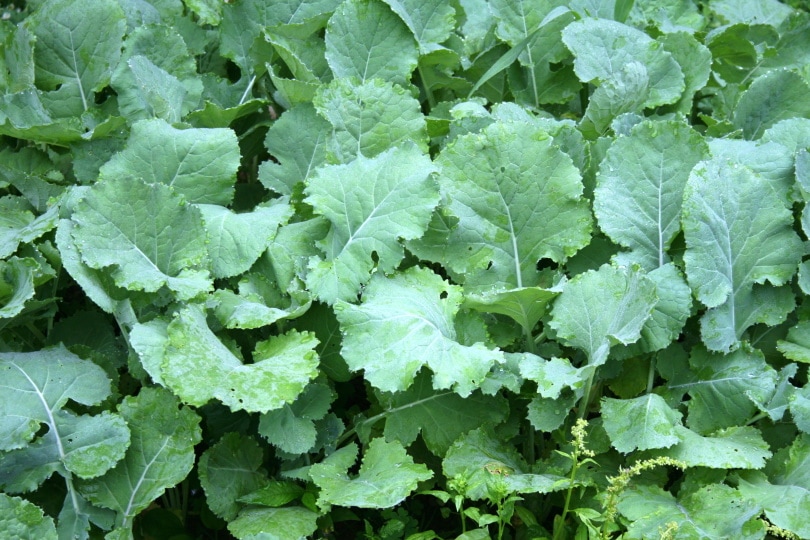
| USDA Hardiness Region | 7–9 |
| Sun | 6–8 hours of full exposure with options of shade in hot environments |
| Placement | Pair with other veggies |
Kale is far from being a favorite treat among children. Still, don’t be afraid to incorporate kale into their garden. Your child is more likely to eat the nutritious leafy vegetable if they grew it themselves.
Although kids may not like the flavor of kale, it certainly has beautiful leaves that are exciting to pick. Make sure to plant kale in the shade and check the leaves to determine if it needs more water. If the kale is really tough, the plant needs more watering.
- Easy to grow
- Fun colored leaves
- Edible
- Some children do not like kale
- Needs careful watering
17. Zucchini
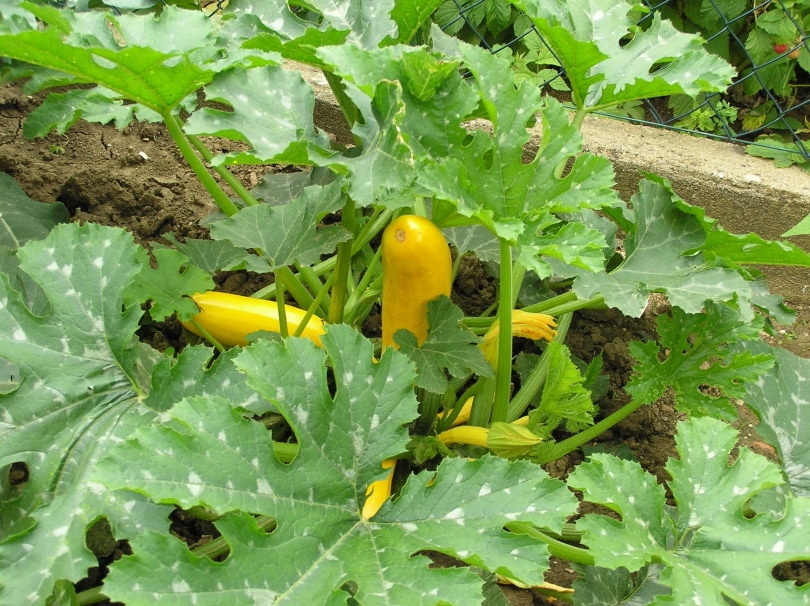
| USDA Hardiness Region | 3–9 |
| Sun | 6–8 hours of full exposure |
| Placement | Moist ground with a lot of space |
Zucchini is another squash variety that is loved by children. Just like the squash mentioned above, zucchini grows outwards and includes flowers and big leaves. This growing process makes zucchini exciting to watch grow.
There are also tons of ways to use zucchini. They are delicious to eat alone, but you can incorporate them into bread and other dishes to trick your child into eating greens.
- Easy to grow
- Fun growing process
- Many recipes available for zucchini
- Needs a lot of space to grow
18. Viola
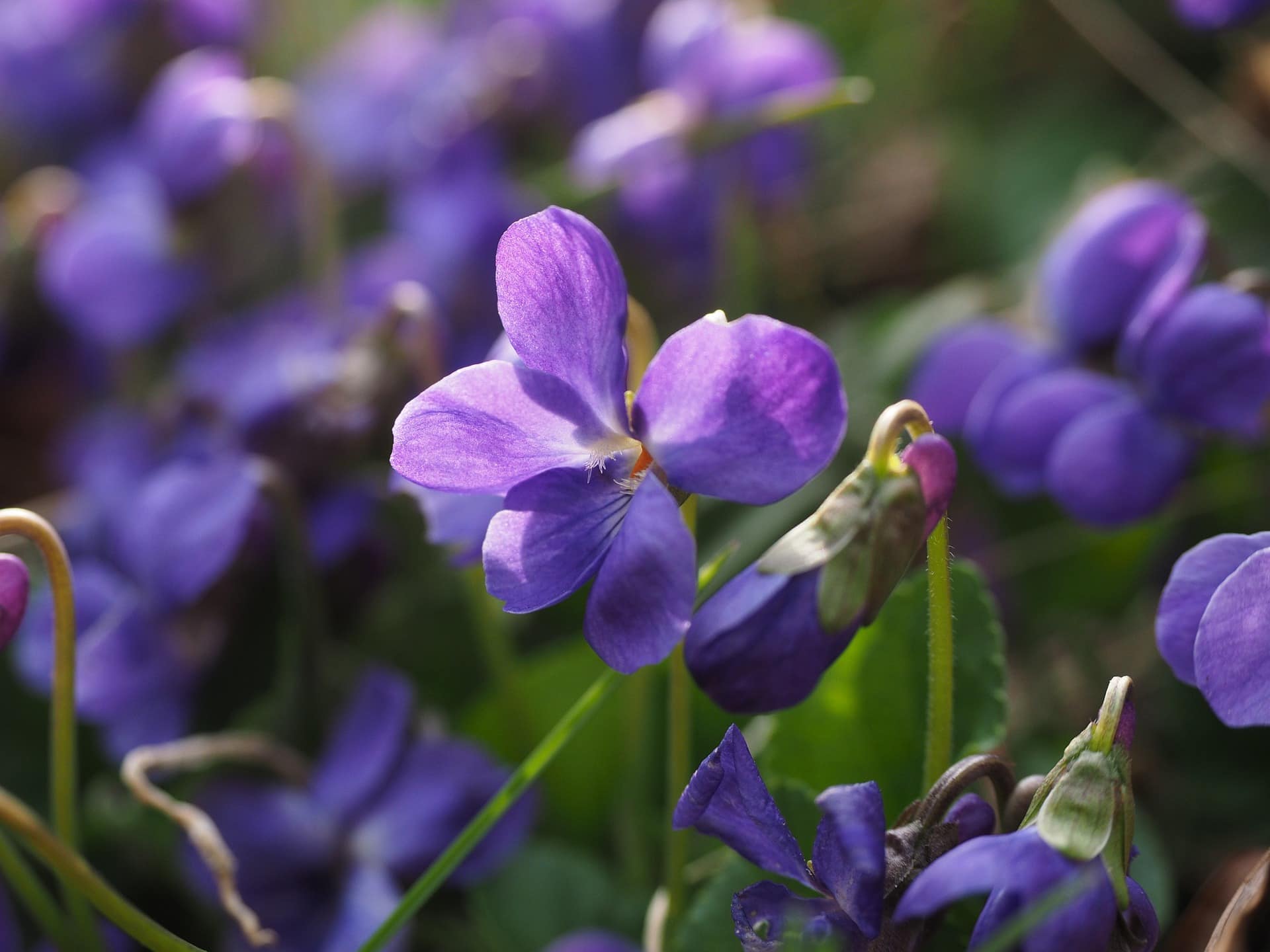
| USDA Hardiness Region | 3–8 |
| Sun | Full sun to partial shade |
| Placement | Moist soil with a lot of nutrients |
Violas are beautiful flowers that are actually incredibly easy to grow. They are a favorite for children’s gardens specifically because of the easy growing process, beautiful appearance, and nontoxic petals. In fact, Viola flowers are edible, which means you do not have to worry about your child consuming the flower.
Some people even like to use Viola plants in their salads. It will add a pop of color and a unique flavor. The flowers can be used as a garnish or blended into frozen drinks for the summer.
- Beautiful
- Easy to grow
- Edible
- Soil requires compost
19. Nasturtiums

| USDA Hardiness Region | 4–8 |
| Sun | Full sun to partial shade |
| Placement | Outsides of garden |
Nasturtiums are gorgeous flowers that will add a lot of color and personality to the garden. The plant includes vase-like flowers and lily pad-like leaves. This flower is great for a whimsical, fairytale-like garden because of its appearance and growth pattern.
Plus, this flower actually keeps aphids away. Plant them around your garden to help keep all unwanted pests far from your plants. If you don’t have a large garden, this flower can be planted in containers as well.
- Beautiful
- Prevents aphids
- Can be grown in containers
- Spreads quickly
20. Herbs
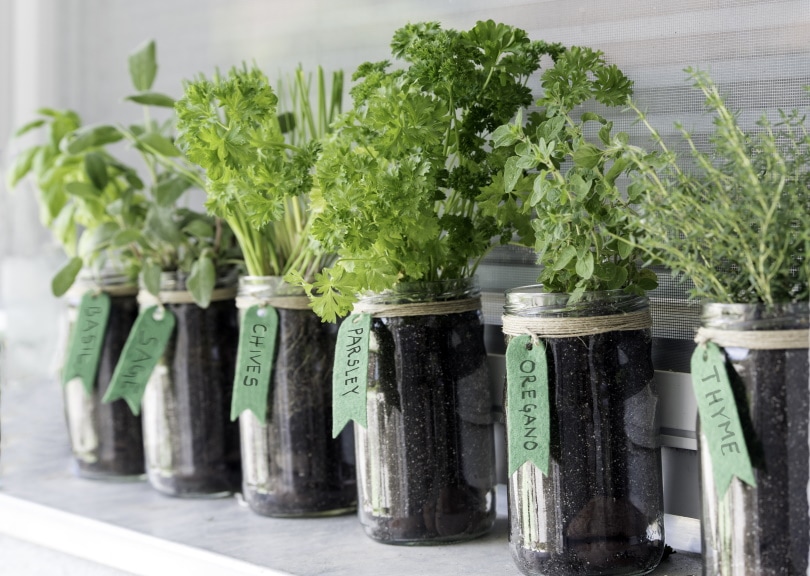
| USDA Hardiness Region | 3–11 |
| Sun | Full sun to partial shade |
| Placement | Containers |
Herbs are super easy to grow, and they can make your food taste delicious. Whether you have a large garden or a small patio space, you can plant herbs anywhere. You can even grow herbs inside in a container, which is recommended.
There are many herbs you can consider. Some of the most popular include sage, mint, and parsley. Just make sure there is enough shade and water, and your herb will flourish.
- Delicious
- Easy to grow inside
- Cannot tolerate high temperatures
Kid-Friendly Garden Tips
Whether you select some of the plants from the list above or select plants from elsewhere, here are some kid-friendly gardening tips to create the best garden for your child:
Have Your Child Involved From The Beginning
Always make sure that your child is involved in every step of the growing process. This will get them excited about the plan, but it will also teach them the importance of responsibility and respect for the world around them.
You can involve your child from the beginning by having them decide which plants they want to grow. That way, they will feel that the plants are their own and not something they are forced to do. Every time you go to maintain the plants, take your child with you and make sure they are there whenever you harvest.
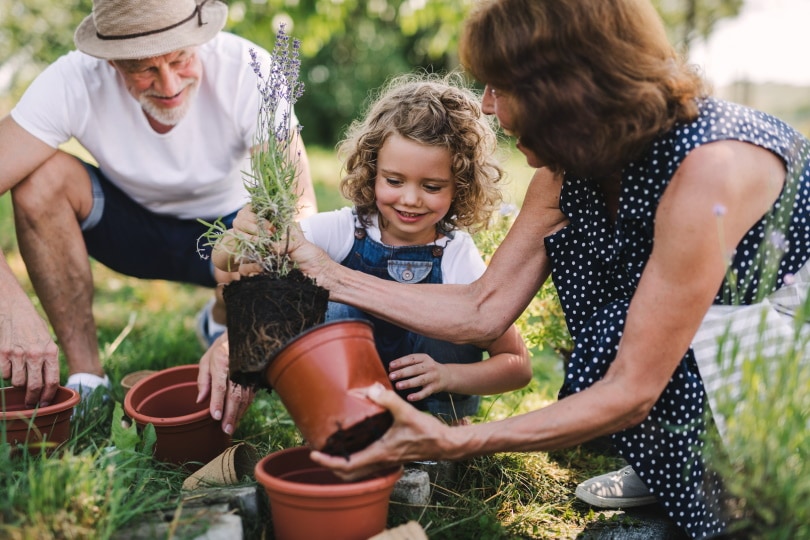
Select Non-toxic Plants
If you are creating a kid-friendly garden, make sure all plants in the garden are non-toxic. Even if you add other plants that your child is not helping with, make sure they are not toxic for your child to be around.
The reason for this is that your child may forget that they are only supposed to pick one or two plants. If you put other plants that are toxic inside the garden, they may accidentally consume the plant not realizing that it is dangerous. Luckily, there are tons of non-toxic plants you can incorporate into your garden.
Select Plants That Grow Quickly
Children get distracted and bored easily. To ensure this doesn’t happen with the garden, only select plants that grow quickly and interestingly. This will keep your child captivated and excited to see what the next day will bring.
Select Plants That Are Sturdy
Children often do not realize how strong they can be. Consequently, delicate plants are no match for children. To ensure that your plants don’t get trampled on by your kids, select plants that are sturdy and strong.
Conclusion
Teach your child to love plants, nature, and gardening by creating a kid-friendly garden that they can help you with. Any one of the twenty vegetables above is a great choice to add to your child’s garden because they are beautiful, easy to grow, and fun to harvest.
See Also:
- 10 Best Vegetables to Grow in Raised Beds (with Pictures)
- 20 Coolest Plants to Grow Indoors (with Pictures)
- 5 Easiest Carnivorous Plants to Grow (With Pictures)
- What Do Plants Need to Grow – 9 Essential Components
Featured Image Credit: A3pfamily, Shutterstock
Contents

